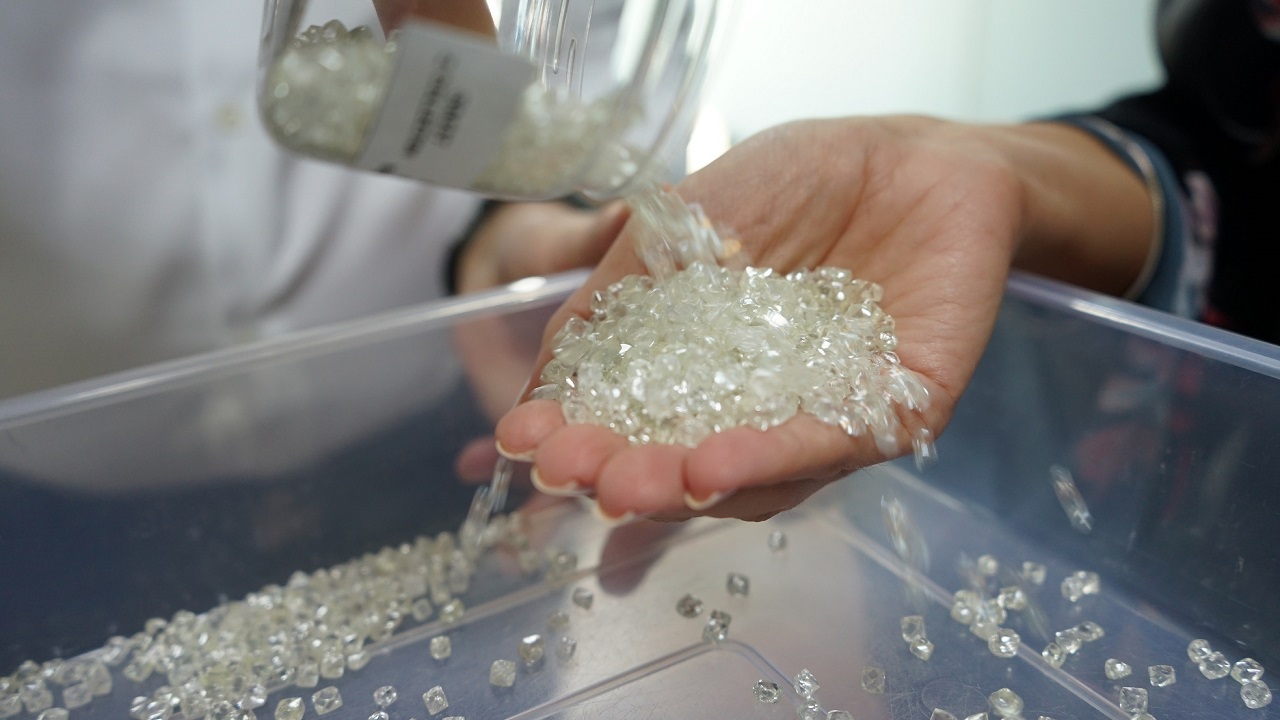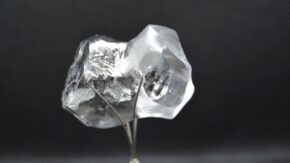The market for small rough diamonds is making a recovery — albeit a modest one — as manufacturers seek low-cost goods to keep their factories running during the downturn.
Demand for rough under 0.75 carats has outperformed the rest of the sector since India returned from its summer break last month, dealers and cutting executives told Rapaport News in the past week.
The diamond market has slumped since the start of the year as inflation and higher interest rates have reduced spending among middle- and lower-income households in the US. Signet Jewelers recently lowered its sales outlook for the year, citing economic pressures and a lull in engagements. China’s slow rebound from coronavirus lockdowns has compounded the situation. The RapNet Diamond Index (RAPI™) for 1-carat diamonds fell 6.2% between January 1 and June 1.
Rough prices have plunged in the past three months, but those of smalls have seen a gentler decline and have even increased in the last four weeks, said Anoop Mehta, president of Mumbai’s Bharat Diamond Bourse (BDB) and chairman and managing director of De Beers sightholder Mohit Diamonds.
Manufacturing units in Surat cannot afford to lose workers — as many learned during Covid-19, when mass furloughs during lockdowns led to staff shortages after demand picked up.
“People need to keep the factories running at least at 50% to 55%,” Mehta said Monday. “In the smalls, if you let your workers go, they don’t come back. They will go and join some other business, like textiles and agriculture.”
Tiny stones
This upward trend has been noticeable in the “+11” rough category and lower — stones under around 0.10 carats — said Adam Schulman, CEO of tender house Koin International.
“That demand is purely based on feeding the factories,” Schulman told Rapaport News last Thursday. “It’s not because there’s polished sell-through. People are being very selective in the amount that they’re spending and the areas that they’re buying.”
Globally, rough from 0.75 to 1.50 carats is stable but still a cause for concern, Schulman added. The 2- to 4-carat segment is extremely slow because of the weak demand for 1-carat polished, he cautioned.
In addition, manufacturers wishing to keep the polishing wheels turning are favoring smaller natural rough when previously they bought synthetics, said a market insider who wished to remain anonymous.
“I think that people are getting a little bit afraid with lab-grown due to the way prices have been crashing over the last three months now at B2B [business-to-business],” the source explained. “And I wonder whether people are still so comfortable putting it in their factories for the moment.”
The trend is similar to events last year, when strong demand for high-quality melee from luxury brands and a lack of Russian supply also supported sales of the tiniest rough stones. This time, manufacturers have upped their buying in the lower qualities, underlining the focus on obtaining the cheapest possible material.
Demanding questions
It’s a matter of debate whether end demand is sufficient to justify this rush to the smalls.
Manufacturers are being careful to avoid an accumulation of unwanted inventory, insisted Vipul Shah, chairman of India’s Gem & Jewellery Export Promotion Council (GJEPC). Polished from 0.33 carats and up is slow, he noted.
“Whatever they’re selling, that is exactly what they’re trying to keep the factory rolling [with],” said Shah, who is also the managing director and CEO of Mumbai-based diamond and jewelry manufacturer Asian Star.
The immediate demand for cheaper polished under 0.20 carats is from jewelry factories in Far East locations such as Malaysia, Indonesia and the Philippines, observed Mehta at the BDB. These units mount the stones into low-value merchandise destined for the US, Asian and Middle East consumer markets, where some demand exists, he explained.
However, the imperative to keep employees busy is the prime factor, said a rough dealer outside India who wished to remain anonymous.
“When I speak to our customers, they [say they] need to fill up the factories,” the dealer commented. “Fundamentally, there’s nothing that’s improved. And I think that’s why we’re seeing some higher prices than last month.”
June tenders
The overall picture remains negative. Trans Atlantic Gem Sales (TAGS) canceled its June tender due to slow demand, said Mike Aggett, the company’s CEO. Petra Diamonds also called off this month’s sale, while De Beers did not hold its late-May auction, instead merging it with its July event. Koin and Stargems hosted sales, though the latter switched its event from Dubai to Surat.
The standout performer was Okavango Diamond Company (ODC), which garnered $101.2 million at its spot sale this month, according to Rapaport calculations based on the Botswana parastatal’s public report.
For many categories, ODC accepted lower prices than in May, when a large proportion of goods failed to sell, while the company benefited additionally from the cancellation of other auctions, commentators said. It also saw significant price drops versus April, Rapaport calculations show.
Price discrepancy
The slowdown appears to have affected prices on the open markets more than at De Beers, industry members said. Sight goods are 5% to 10% more expensive than the equivalent production at tenders and auctions, even after the miner lowered the cost of its larger rough at its June trading session, dealers estimated.
This is a common phenomenon in a weak market, as small miners and tender houses want to raise liquidity while the biggest producers can tolerate selling less for a short while. During the Covid-19 crisis in 2020, rough buyers scaled back their purchases at De Beers’ and Alrosa’s contract sales because of a large price gap. Rough prices ended up exceeding pre-pandemic when the market finally recovered in 2021 and 2022.
With manufacturers flocking to the rough that produces melee, larger goods have lost some of the ground that the industry made in the past two years, according to one of the anonymous market participants.
“I think we’ve reached prices in the 2.5- to 4-caraters [in rough] that are now [at levels] prior to Covid-19,” he said.
Image: Rough at a tender in the Dubai Diamond Exchange in July 2019. (Dubai Diamond Exchange)



